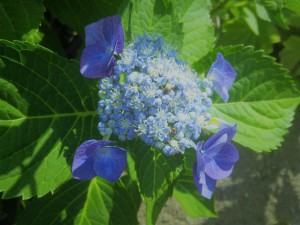
Mothers and gardeners have something in common—their work is never done. Still, as the old year passes away and the New Year waits in the wings, it is a good time to look back at the growing season. Since I am an optimist—as all gardeners should be—I count the successes and not the failures. Failures are learning experiences, sometimes valuable ones, so you really can’t put them in the debit column of life.
Last winter was not the time to visit the great botanical gardens. The thousands of plants in those institutions did not suffer from COVID, but thousands of people who tended them and the plant lovers who came to admire them did. Staying close to home meant doing two things—perusing the catalogs more assiduously than usual and wandering through the one garden that needs no work and gets better every year—the garden of memory. I reminisced about the Lombardy poplars that bounded my father’s garden—once ubiquitous, but now rare, due to their short lives, weak wood, shallow roots and susceptibility to pests.
My father also grew scented blue irises, which have probably gotten bluer and better smelling in my garden of memory. I am still searching for a variety that matches the plants in my childhood backyard.
The long cool spring gave us a longer-than-normal bloom period for snowdrops, hellebores and daffodils. The hellebores in my yard, mostly big, bodacious plants, were especially impressive and justified the trouble it took to clip off their ratty, winter-worn leaves to reveal scores of buttercup-like blooms. I used a potted goat willow or Salix caprea ‘Pendula’ as an indoor Easter egg tree and then installed it in a big pot in my back garden. It thrived during late spring and early summer. I hope it survives the winter to produce a bountiful number of spring catkins.
My part of the world was awash in rain for much of the spring and summer, which was great for water hogs like the blue hydrangeas. Those shrubs, which did not suffer a bud-killing late spring frost, produced bounteous blue flowerheads. Hot weather took its time arriving, prolonging the shrubs’ beauty. In other years torrid heat has turned them to crispy critters after only a week or so of bloom time.
The most significant task that I undertook in my garden this year—and it is an ongoing one—was some much needed editing. Between the manic buying that happens when I am trolling the aisles of my favorite garden center and the fact that my garden is now quite mature, judicious organizing and even a bit of removal are necessary.
For years I have disliked the yucca in my front garden. In response, it had gotten bigger and bigger, producing offsets with amazing fecundity. For those who love yuccas, I will admit that it was striking and sculptural, not to mention beautiful in bloom. However, it was taking up more and more space, and it simply did not sing to me.
The day I chose to do the job was one of summer’s hottest. If you have never removed a yucca, you cannot possibly imagine how deep and how far its root system stretches. I had to dig a pit three feet wide and deep to get all the enlarged roots, and there may still be a few lurking in the ground.
At the end of the process, I was hot, tired and had two large lawn and leaf bags filled with yucca detritus. Still, I felt triumphant, especially after a few Tylenol and a spell in the air conditioning. I freed up a lot of usable space, allowing for the installation of some better behaved plants that I like a lot more.
Sometimes nature does the editing for you, which I found out to my dismay this year when a couple of my roses came down with rose rosette disease. There is no cure except removal and you cannot plant another rose in the same space. The yucca may have just about broken my back, but, as a longtime rose fancier, the rose removal fractured my heart. I felt a little better when I was able to replace one of the diseased roses with a peony, which will be lovely in its own right, but not quite the same. When the new growing season rolls around I will be watchful for signs of the disease in other rose plants.
We have a permanent deer population in my part of the suburban world and they adore garden stalwarts like hostas, lilies, rose tips and tulips. Two years ago I had to use copious amounts of deer spray just to prevent the worst of the damage. This year, though, the deer chose to dine almost exclusively on the prolific ‘Alma Potschke’ asters, thereby saving me the trouble of cutting them back in May and early August. Pruning—whether it is done with clippers or deer teeth–tall New England asters makes the plants branch out, ultimately producing more flowers. The deer stayed away from the few tulips I planted and ignored the fall-blooming anemones, a favorite in years past. Though no one knows what the deer think—or even if they think—this year they chose the best plants upon which to gorge themselves.
The business of life curtailed my fall garden clean-up, but I am hoping for a few balmy days in January to get the worst of it taken care of. The good news is that though I overbought on bulbs, they all went into the ground before Thanksgiving. The world may continue turning upside down, but no matter what, I have something to look forward to in the spring. I have ended the year on a successful note.
